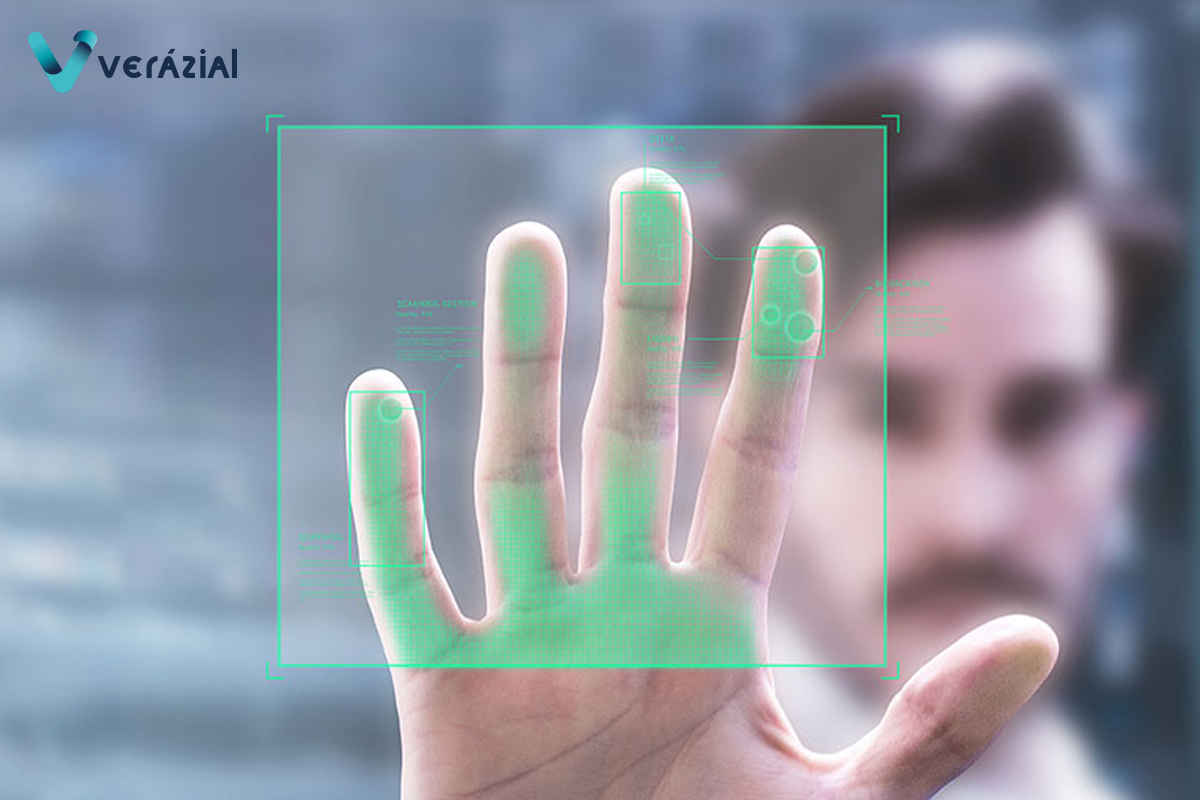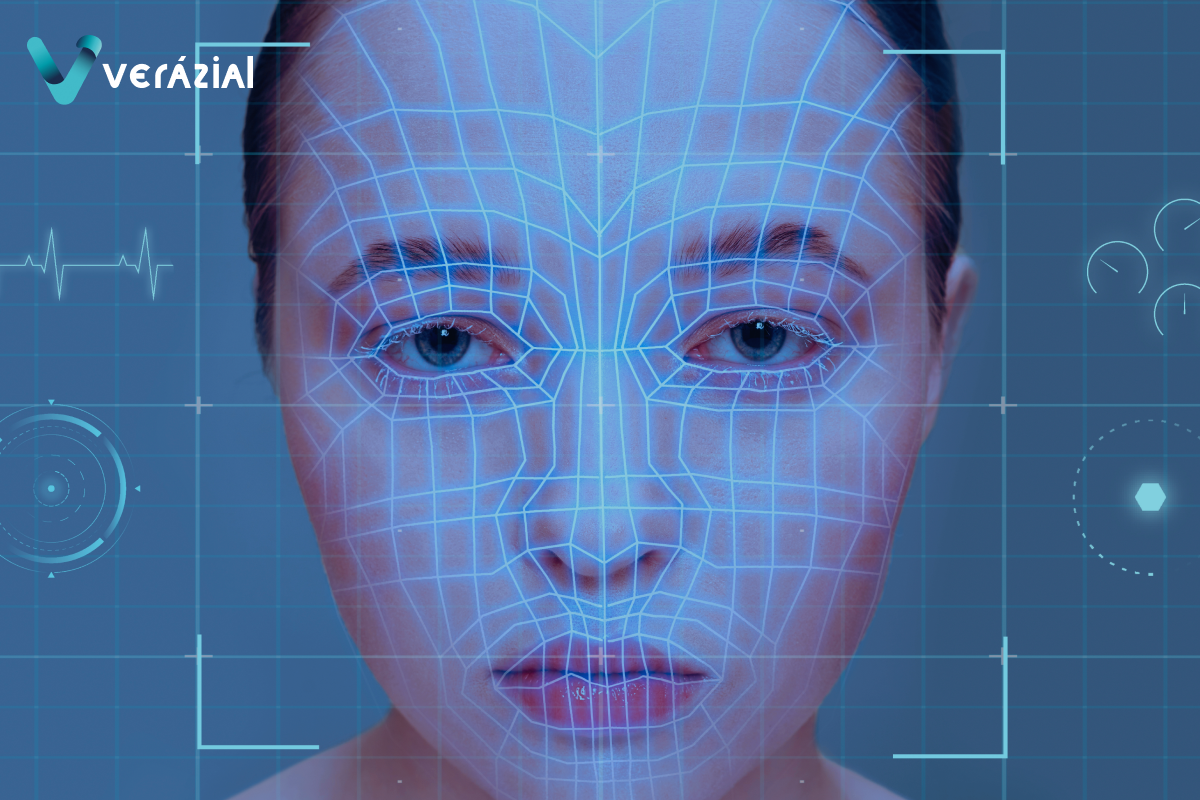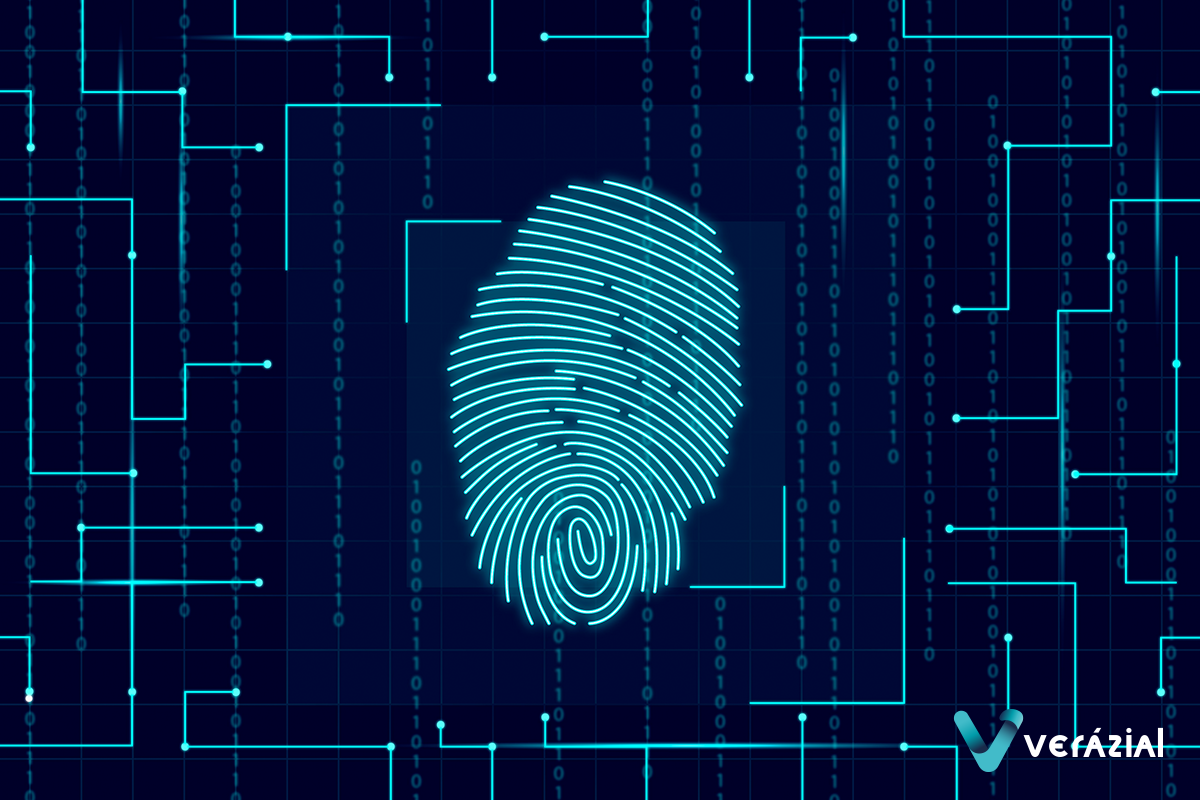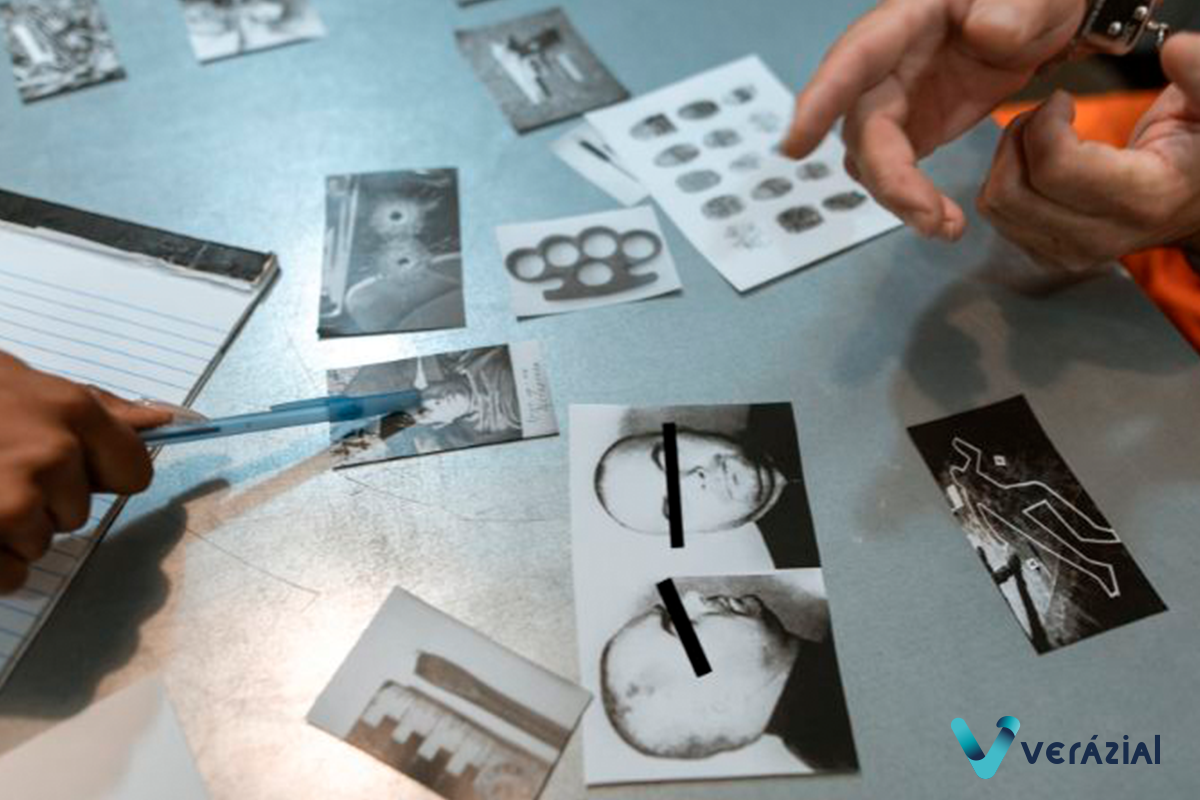Forensic Biometrics: The Role of Palmprints and Rolled Fingerprints in Criminalistics
Palmprint and rolled fingerprint biometrics have established themselves as essential tools in forensic and criminal identification, offering a greater level of detail and coverage than flat fingerprints. Traditionally applied in police contexts, their use is now expanding into other critical environments such as correctional facilities, criminal records, and identity management systems—where precision in identification is vital.
The identification of individuals through friction ridge patterns—whether from fingers or palms—has been one of the most reliable tools in criminal investigations for decades. Despite the rise of new biometric technologies, fingerprints and palmprints remain indispensable for determining the identity of individuals connected to a crime scene. Their value lies not only in their uniqueness and permanence but also in how they can be captured, analyzed, and matched against existing databases with exceptional speed and accuracy.
When discussing friction ridge identification, we are not only referring to the classic flat fingerprints taken from the fingers. Palmprints—which include the central area of the hand, the base of the fingers, the heel of the palm, and the outer edge—offer an additional set of ridges and minutiae that are also unique to each individual.
Palmprints provide complementary, and sometimes even more valuable, information—especially in scenarios where contact is made with the full palm, such as during physical struggles or when leaning on surfaces. In many criminal investigations, palmprints are the only latent evidence found at the crime scene.
We also have rolled fingerprints, which are captured by rolling the finger from one side to the other in order to obtain a more complete image.
In criminalistics, rolled fingerprints are particularly valuable because they allow for the capture of a greater number of biometric features, significantly increasing the chances of a successful database match. This technique captures not just the core of the fingerprint, but also the edges of the finger—details that might be missing in a flat print.
At a crime scene, the collection of fingerprints is a critical task. Latent prints—those not visible to the naked eye—can be revealed using traditional methods such as powders, cyanoacrylate vapors, chemical reagents, or forensic lighting. However, digital and contactless methods are gaining traction due to their precision, speed, and ability to directly digitize prints.
Palmprints, due to their size and complexity, are often found in areas where the perpetrator made forceful contact: doors, walls, tables, clothing, or even on the victims themselves. Because they cover a broader surface area, these prints can contain more information than partial fingerprints, making them key elements in reconstructing events and linking suspects to the crime scene.
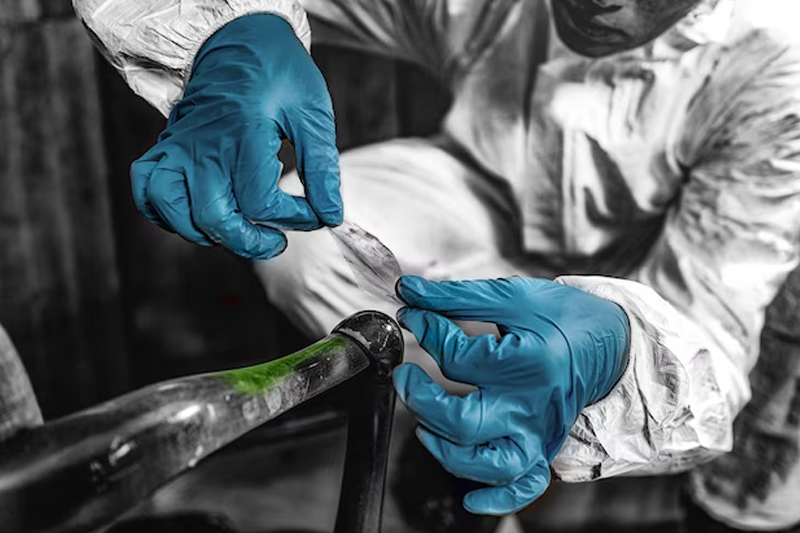
Advantages and Disadvantages of Rolled Fingerprints
Rolled fingerprints, captured by rolling the finger across a sensor or surface, offer a broader level of detail than flat fingerprints. This capture method is particularly valuable in forensic and official registration applications. Below are the main advantages and disadvantages:
Advantages:
- Greater biometric information: By capturing the entire circumference of the finger, more minutiae and unique characteristics are obtained, enhancing identification accuracy.
- Improved database matches: Due to their high level of detail, rolled fingerprints significantly increase the chances of successful matches in AFIS (Automated Fingerprint Identification Systems).
- Reduced false negatives: The broader coverage lowers the risk of verification errors, especially compared to partial or poorly captured prints.
- Preferred for official records: Rolled prints are the standard in police, correctional, and identity documentation procedures due to their high quality.
Disadvantages:
- More complex capture process: Proper technique is required to avoid distortion; poorly executed rolls may result in blurry or incomplete images.
- Operator dependency: The quality of the result can be affected if the operator lacks training or doesn’t properly guide the user during capture.
- Slightly longer capture time: Although not slow, it involves more steps than flat fingerprint capture, which can be a factor in high-throughput environments.
- Higher risk of movement errors: If the finger is rolled with too much pressure or uneven speed, it may introduce errors affecting readability.
Advantages and Disadvantages of Palmprints
Palmprints offer an additional and complementary source of biometric data.While their use is not as widespread as fingerprints, their value in forensic contexts is indisputable. Here are their main advantages and disadvantages:
Advantages:
- Larger surface area for analysis: The palm contains more ridges and minutiae than fingers, allowing for a more robust identification when properly captured.
- Crucial in criminal investigations: Palmprints are often the only evidence found at crime scenes, particularly in cases involving physical contact with surfaces.
- Complements fingerprint data: Useful for obtaining matches when digital fingerprints are partial, of poor quality, or missing altogether.
- Applicable in full-hand contact events: Effective in identifying grip patterns, struggles, or pressure points at crime scenes.
Disadvantages:
- Difficult to capture completely: The anatomy and size of the palm make it more challenging to obtain a full, distortion-free image.
- Requires specialized equipment: Palmprints cannot be captured using standard fingerprint sensors; dedicated hardware is necessary.
- More complex analysis: Due to the larger surface area and volume of data, processing and interpretation are technically more demanding.
- Less standardization in traditional systems: Many existing systems are designed primarily for fingerprints, limiting seamless integration of palmprint data.
Real-World Use Cases and Recommended Scenarios
Both palmprints and rolled fingerprints play a vital role in contexts where more comprehensive and accurate identification is needed—going beyond the limitations of flat fingerprints.
Palmprints have been pivotal in solving complex crimes where no visible fingerprints were found. In homicides, robberies, or physical assaults, partial or full palm impressions are frequently discovered on vertical surfaces, handled objects, or even soft tissues. Their analysis can be crucial in linking a suspect to a crime scene, providing strong forensic evidence that might otherwise go unnoticed.
Rolled fingerprints, on the other hand, enable the capture of more papillary ridge details by recording the entire surface of the finger—from one edge to the other. This technique is essential in criminal databases, as it enhances the quality of stored information and increases match rates during searches. It is highly recommended during initial registration of detainees or in strict identity verification protocols.
Beyond criminal investigations, these techniques are also highly effective and recommended in the following scenarios:
- Prisons and correctional systems: For more accurate inmate identification, especially in cases where individuals may attempt to bypass identity controls.
- Forensic police and crime labs: Which require advanced comparison, search, and matching capabilities in both local and international databases.
- Criminal record systems: Where combining flat, rolled, and palmprint data is becoming a standard practice to ensure future identification reliability and reduce profile-matching errors.
- Judicial and expert testimony scenarios: Where a properly captured palm or rolled print can mean the difference between circumstantial and conclusive evidence.
The combination of these biometric techniques significantly strengthens the ability of security and justice agencies to accurately establish identities—even in the most complex cases.
We invite you to read our articles:
Discover Verázial ID Criminalistics our solution designed to ensure precision and security in forensic investigations. It guarantees the reliability of every piece of evidence and data throughout the investigative process.
Contact us for a demo and/or a personalized assessment.
References
- The police forensic investigator takes fingerprints. [Freepik]
Forensic Biometrics: The Role of Palmprints and Rolled Fingerprints in Criminalistics
Palmprint and rolled fingerprint biometrics have established themselves as essential tools in forensic and criminal identification, offering a greater level of detail and coverage than flat fingerprints. Traditionally applied in police contexts, their use is now expanding into other critical environments such as correctional facilities, criminal records, and identity management systems—where precision in identification is vital.
The identification of individuals through friction ridge patterns—whether from fingers or palms—has been one of the most reliable tools in criminal investigations for decades. Despite the rise of new biometric technologies, fingerprints and palmprints remain indispensable for determining the identity of individuals connected to a crime scene. Their value lies not only in their uniqueness and permanence but also in how they can be captured, analyzed, and matched against existing databases with exceptional speed and accuracy.
When discussing friction ridge identification, we are not only referring to the classic flat fingerprints taken from the fingers. Palmprints—which include the central area of the hand, the base of the fingers, the heel of the palm, and the outer edge—offer an additional set of ridges and minutiae that are also unique to each individual.
Palmprints provide complementary, and sometimes even more valuable, information—especially in scenarios where contact is made with the full palm, such as during physical struggles or when leaning on surfaces. In many criminal investigations, palmprints are the only latent evidence found at the crime scene.
We also have rolled fingerprints, which are captured by rolling the finger from one side to the other in order to obtain a more complete image.
In criminalistics, rolled fingerprints are particularly valuable because they allow for the capture of a greater number of biometric features, significantly increasing the chances of a successful database match. This technique captures not just the core of the fingerprint, but also the edges of the finger—details that might be missing in a flat print.
At a crime scene, the collection of fingerprints is a critical task. Latent prints—those not visible to the naked eye—can be revealed using traditional methods such as powders, cyanoacrylate vapors, chemical reagents, or forensic lighting. However, digital and contactless methods are gaining traction due to their precision, speed, and ability to directly digitize prints.
Palmprints, due to their size and complexity, are often found in areas where the perpetrator made forceful contact: doors, walls, tables, clothing, or even on the victims themselves. Because they cover a broader surface area, these prints can contain more information than partial fingerprints, making them key elements in reconstructing events and linking suspects to the crime scene.

Advantages and Disadvantages of Rolled Fingerprints
Rolled fingerprints, captured by rolling the finger across a sensor or surface, offer a broader level of detail than flat fingerprints. This capture method is particularly valuable in forensic and official registration applications. Below are the main advantages and disadvantages:
Advantages:
- Greater biometric information: By capturing the entire circumference of the finger, more minutiae and unique characteristics are obtained, enhancing identification accuracy.
- Improved database matches: Due to their high level of detail, rolled fingerprints significantly increase the chances of successful matches in AFIS (Automated Fingerprint Identification Systems).
- Reduced false negatives: The broader coverage lowers the risk of verification errors, especially compared to partial or poorly captured prints.
- Preferred for official records: Rolled prints are the standard in police, correctional, and identity documentation procedures due to their high quality.
Disadvantages:
- More complex capture process: Proper technique is required to avoid distortion; poorly executed rolls may result in blurry or incomplete images.
- Operator dependency: The quality of the result can be affected if the operator lacks training or doesn’t properly guide the user during capture.
- Slightly longer capture time: Although not slow, it involves more steps than flat fingerprint capture, which can be a factor in high-throughput environments.
- Higher risk of movement errors: If the finger is rolled with too much pressure or uneven speed, it may introduce errors affecting readability.
Advantages and Disadvantages of Palmprints
Palmprints offer an additional and complementary source of biometric data.While their use is not as widespread as fingerprints, their value in forensic contexts is indisputable. Here are their main advantages and disadvantages:
Advantages:
- Larger surface area for analysis: The palm contains more ridges and minutiae than fingers, allowing for a more robust identification when properly captured.
- Crucial in criminal investigations: Palmprints are often the only evidence found at crime scenes, particularly in cases involving physical contact with surfaces.
- Complements fingerprint data: Useful for obtaining matches when digital fingerprints are partial, of poor quality, or missing altogether.
- Applicable in full-hand contact events: Effective in identifying grip patterns, struggles, or pressure points at crime scenes.
Disadvantages:
- Difficult to capture completely: The anatomy and size of the palm make it more challenging to obtain a full, distortion-free image.
- Requires specialized equipment: Palmprints cannot be captured using standard fingerprint sensors; dedicated hardware is necessary.
- More complex analysis: Due to the larger surface area and volume of data, processing and interpretation are technically more demanding.
- Less standardization in traditional systems: Many existing systems are designed primarily for fingerprints, limiting seamless integration of palmprint data.
Real-World Use Cases and Recommended Scenarios
Both palmprints and rolled fingerprints play a vital role in contexts where more comprehensive and accurate identification is needed—going beyond the limitations of flat fingerprints.
Palmprints have been pivotal in solving complex crimes where no visible fingerprints were found. In homicides, robberies, or physical assaults, partial or full palm impressions are frequently discovered on vertical surfaces, handled objects, or even soft tissues. Their analysis can be crucial in linking a suspect to a crime scene, providing strong forensic evidence that might otherwise go unnoticed.
Rolled fingerprints, on the other hand, enable the capture of more papillary ridge details by recording the entire surface of the finger—from one edge to the other. This technique is essential in criminal databases, as it enhances the quality of stored information and increases match rates during searches. It is highly recommended during initial registration of detainees or in strict identity verification protocols.
Beyond criminal investigations, these techniques are also highly effective and recommended in the following scenarios:
- Prisons and correctional systems: For more accurate inmate identification, especially in cases where individuals may attempt to bypass identity controls.
- Forensic police and crime labs: Which require advanced comparison, search, and matching capabilities in both local and international databases.
- Criminal record systems: Where combining flat, rolled, and palmprint data is becoming a standard practice to ensure future identification reliability and reduce profile-matching errors.
- Judicial and expert testimony scenarios: Where a properly captured palm or rolled print can mean the difference between circumstantial and conclusive evidence.
The combination of these biometric techniques significantly strengthens the ability of security and justice agencies to accurately establish identities—even in the most complex cases.
We invite you to read our articles:
Discover Verázial ID Criminalistics our solution designed to ensure precision and security in forensic investigations. It guarantees the reliability of every piece of evidence and data throughout the investigative process.
Contact us for a demo and/or a personalized assessment.
References
- The police forensic investigator takes fingerprints. [Freepik]
Forensic Biometrics: The Role of Palmprints and Rolled Fingerprints in Criminalistics
Palmprint and rolled fingerprint biometrics have established themselves as essential tools in forensic and criminal identification, offering a greater level of detail and coverage than flat fingerprints. Traditionally applied in police contexts, their use is now expanding into other critical environments such as correctional facilities, criminal records, and identity management systems—where precision in identification is vital.
The identification of individuals through friction ridge patterns—whether from fingers or palms—has been one of the most reliable tools in criminal investigations for decades. Despite the rise of new biometric technologies, fingerprints and palmprints remain indispensable for determining the identity of individuals connected to a crime scene. Their value lies not only in their uniqueness and permanence but also in how they can be captured, analyzed, and matched against existing databases with exceptional speed and accuracy.
When discussing friction ridge identification, we are not only referring to the classic flat fingerprints taken from the fingers. Palmprints—which include the central area of the hand, the base of the fingers, the heel of the palm, and the outer edge—offer an additional set of ridges and minutiae that are also unique to each individual.
Palmprints provide complementary, and sometimes even more valuable, information—especially in scenarios where contact is made with the full palm, such as during physical struggles or when leaning on surfaces. In many criminal investigations, palmprints are the only latent evidence found at the crime scene.
We also have rolled fingerprints, which are captured by rolling the finger from one side to the other in order to obtain a more complete image.
In criminalistics, rolled fingerprints are particularly valuable because they allow for the capture of a greater number of biometric features, significantly increasing the chances of a successful database match. This technique captures not just the core of the fingerprint, but also the edges of the finger—details that might be missing in a flat print.
At a crime scene, the collection of fingerprints is a critical task. Latent prints—those not visible to the naked eye—can be revealed using traditional methods such as powders, cyanoacrylate vapors, chemical reagents, or forensic lighting. However, digital and contactless methods are gaining traction due to their precision, speed, and ability to directly digitize prints.
Palmprints, due to their size and complexity, are often found in areas where the perpetrator made forceful contact: doors, walls, tables, clothing, or even on the victims themselves. Because they cover a broader surface area, these prints can contain more information than partial fingerprints, making them key elements in reconstructing events and linking suspects to the crime scene.

Advantages and Disadvantages of Rolled Fingerprints
Rolled fingerprints, captured by rolling the finger across a sensor or surface, offer a broader level of detail than flat fingerprints. This capture method is particularly valuable in forensic and official registration applications. Below are the main advantages and disadvantages:
Advantages:
- Greater biometric information: By capturing the entire circumference of the finger, more minutiae and unique characteristics are obtained, enhancing identification accuracy.
- Improved database matches: Due to their high level of detail, rolled fingerprints significantly increase the chances of successful matches in AFIS (Automated Fingerprint Identification Systems).
- Reduced false negatives: The broader coverage lowers the risk of verification errors, especially compared to partial or poorly captured prints.
- Preferred for official records: Rolled prints are the standard in police, correctional, and identity documentation procedures due to their high quality.
Disadvantages:
- More complex capture process: Proper technique is required to avoid distortion; poorly executed rolls may result in blurry or incomplete images.
- Operator dependency: The quality of the result can be affected if the operator lacks training or doesn’t properly guide the user during capture.
- Slightly longer capture time: Although not slow, it involves more steps than flat fingerprint capture, which can be a factor in high-throughput environments.
- Higher risk of movement errors: If the finger is rolled with too much pressure or uneven speed, it may introduce errors affecting readability.
Advantages and Disadvantages of Palmprints
Palmprints offer an additional and complementary source of biometric data.While their use is not as widespread as fingerprints, their value in forensic contexts is indisputable. Here are their main advantages and disadvantages:
Advantages:
- Larger surface area for analysis: The palm contains more ridges and minutiae than fingers, allowing for a more robust identification when properly captured.
- Crucial in criminal investigations: Palmprints are often the only evidence found at crime scenes, particularly in cases involving physical contact with surfaces.
- Complements fingerprint data: Useful for obtaining matches when digital fingerprints are partial, of poor quality, or missing altogether.
- Applicable in full-hand contact events: Effective in identifying grip patterns, struggles, or pressure points at crime scenes.
Disadvantages:
- Difficult to capture completely: The anatomy and size of the palm make it more challenging to obtain a full, distortion-free image.
- Requires specialized equipment: Palmprints cannot be captured using standard fingerprint sensors; dedicated hardware is necessary.
- More complex analysis: Due to the larger surface area and volume of data, processing and interpretation are technically more demanding.
- Less standardization in traditional systems: Many existing systems are designed primarily for fingerprints, limiting seamless integration of palmprint data.
Real-World Use Cases and Recommended Scenarios
Both palmprints and rolled fingerprints play a vital role in contexts where more comprehensive and accurate identification is needed—going beyond the limitations of flat fingerprints.
Palmprints have been pivotal in solving complex crimes where no visible fingerprints were found. In homicides, robberies, or physical assaults, partial or full palm impressions are frequently discovered on vertical surfaces, handled objects, or even soft tissues. Their analysis can be crucial in linking a suspect to a crime scene, providing strong forensic evidence that might otherwise go unnoticed.
Rolled fingerprints, on the other hand, enable the capture of more papillary ridge details by recording the entire surface of the finger—from one edge to the other. This technique is essential in criminal databases, as it enhances the quality of stored information and increases match rates during searches. It is highly recommended during initial registration of detainees or in strict identity verification protocols.
Beyond criminal investigations, these techniques are also highly effective and recommended in the following scenarios:
- Prisons and correctional systems: For more accurate inmate identification, especially in cases where individuals may attempt to bypass identity controls.
- Forensic police and crime labs: Which require advanced comparison, search, and matching capabilities in both local and international databases.
- Criminal record systems: Where combining flat, rolled, and palmprint data is becoming a standard practice to ensure future identification reliability and reduce profile-matching errors.
- Judicial and expert testimony scenarios: Where a properly captured palm or rolled print can mean the difference between circumstantial and conclusive evidence.
The combination of these biometric techniques significantly strengthens the ability of security and justice agencies to accurately establish identities—even in the most complex cases.
We invite you to read our articles:
Discover Verázial ID Criminalistics our solution designed to ensure precision and security in forensic investigations. It guarantees the reliability of every piece of evidence and data throughout the investigative process.
Contact us for a demo and/or a personalized assessment.
References
- The police forensic investigator takes fingerprints. [Freepik]
You May Also Like
You May Also Like

